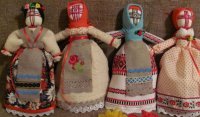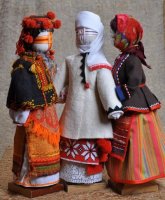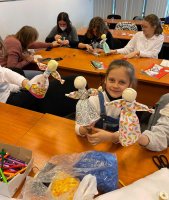 On April 8, 2022, a master class on making motanka traditional dolls was held at the European Foundation of Slavic Literature and Culture with the Foun of Ukrainian Literature and Culture. The event was attended by children who arrived from Ukraine from 7 to 13 years old, as well as adults. The purpose of the lesson is to develop children's interest in the origins of folk art.
On April 8, 2022, a master class on making motanka traditional dolls was held at the European Foundation of Slavic Literature and Culture with the Foun of Ukrainian Literature and Culture. The event was attended by children who arrived from Ukraine from 7 to 13 years old, as well as adults. The purpose of the lesson is to develop children's interest in the origins of folk art.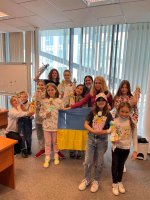
Traditionally made at home from extra pieces of material and usually stuffed with the same material, they are among the oldest children's toys in the world. The British Museum has a rag doll from Ancient Rome, found in a child's grave, dating back to the 1st-5th centuries AD. Historically, rag dolls have been used as comfort items and to teach parenting skills to young children. They were often used to teach children how to sew, as children could practice sewing clothes for dolls and make simple dolls themselves.
Mass production of rag dolls began around the 1830s, when color printing on fabric was first developed. Today, many rag dolls are produced on an industrial scale to mimic the features of the original homemade dolls, such as simple features, soft cloth bodies, and patchwork clothing [1].
During the master class, the children, under the guidance of an experienced craftsman from Ukraine, made a doll on their own, got acquainted with the history of its creation and ancient traditions. The young craftsmen took the finished doll with them to surprise their relatives with a handmade product at home.
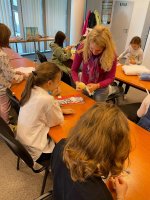
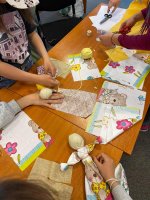
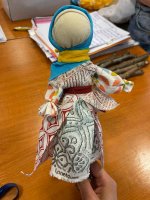
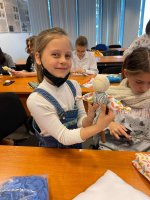 The very process of creating a doll from scraps is not only an interesting, but also a useful form of creativity, in which fine motor skills, imagination develop, and the ability to think creatively is instilled.
The very process of creating a doll from scraps is not only an interesting, but also a useful form of creativity, in which fine motor skills, imagination develop, and the ability to think creatively is instilled.We thank the Ukrainian folk master Yana for an informative and interesting master class.
[1] Wikipedia https://en.wikipedia.org/wiki/%D0%A2%D1%80%D1%8F%D0%BF%D0%B8%D1%87%D0%BD%D0%B0%D1 %8F_%D0%BA%D1%83%D0%BA%D0%BB%D0%B0
